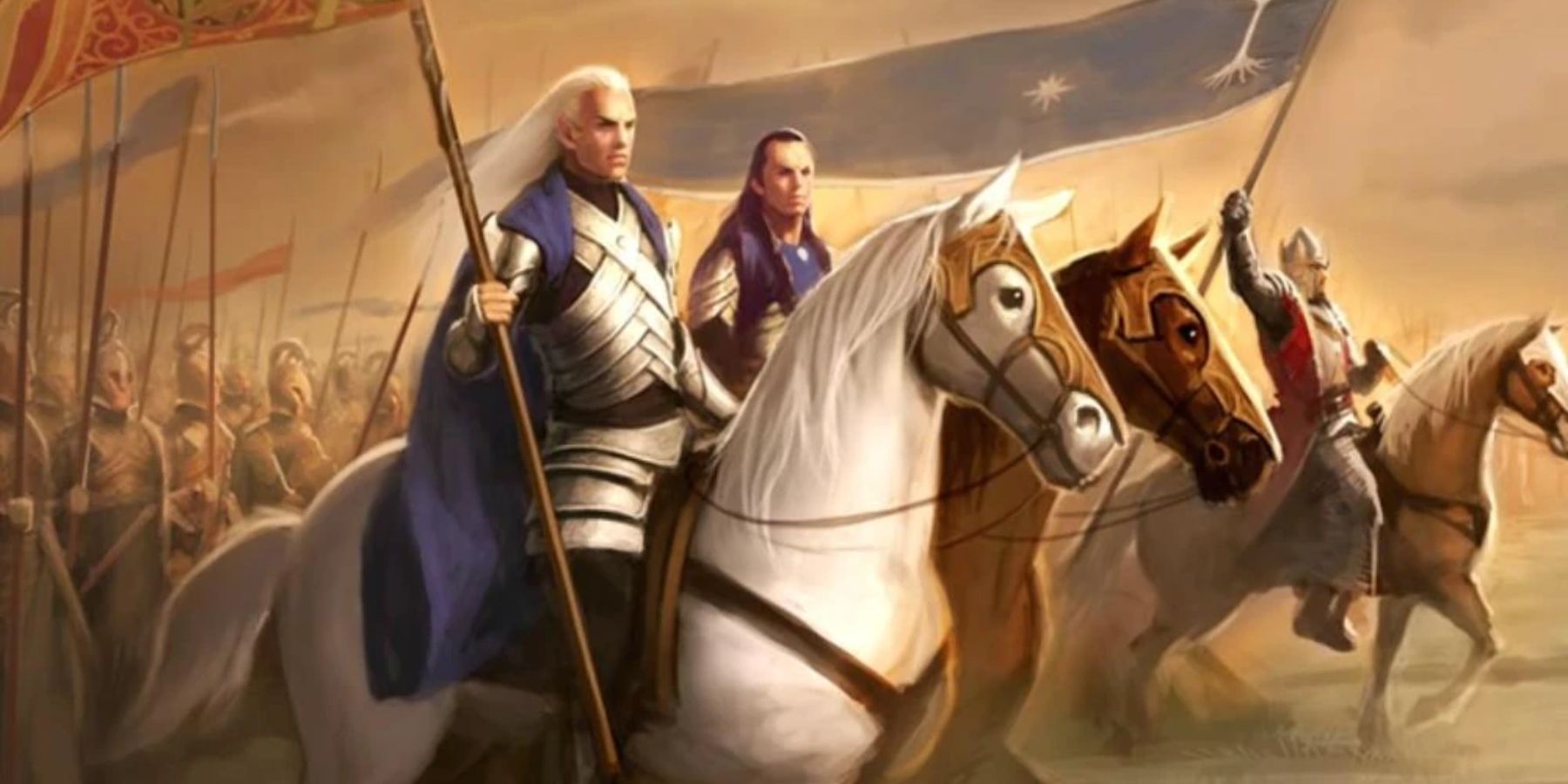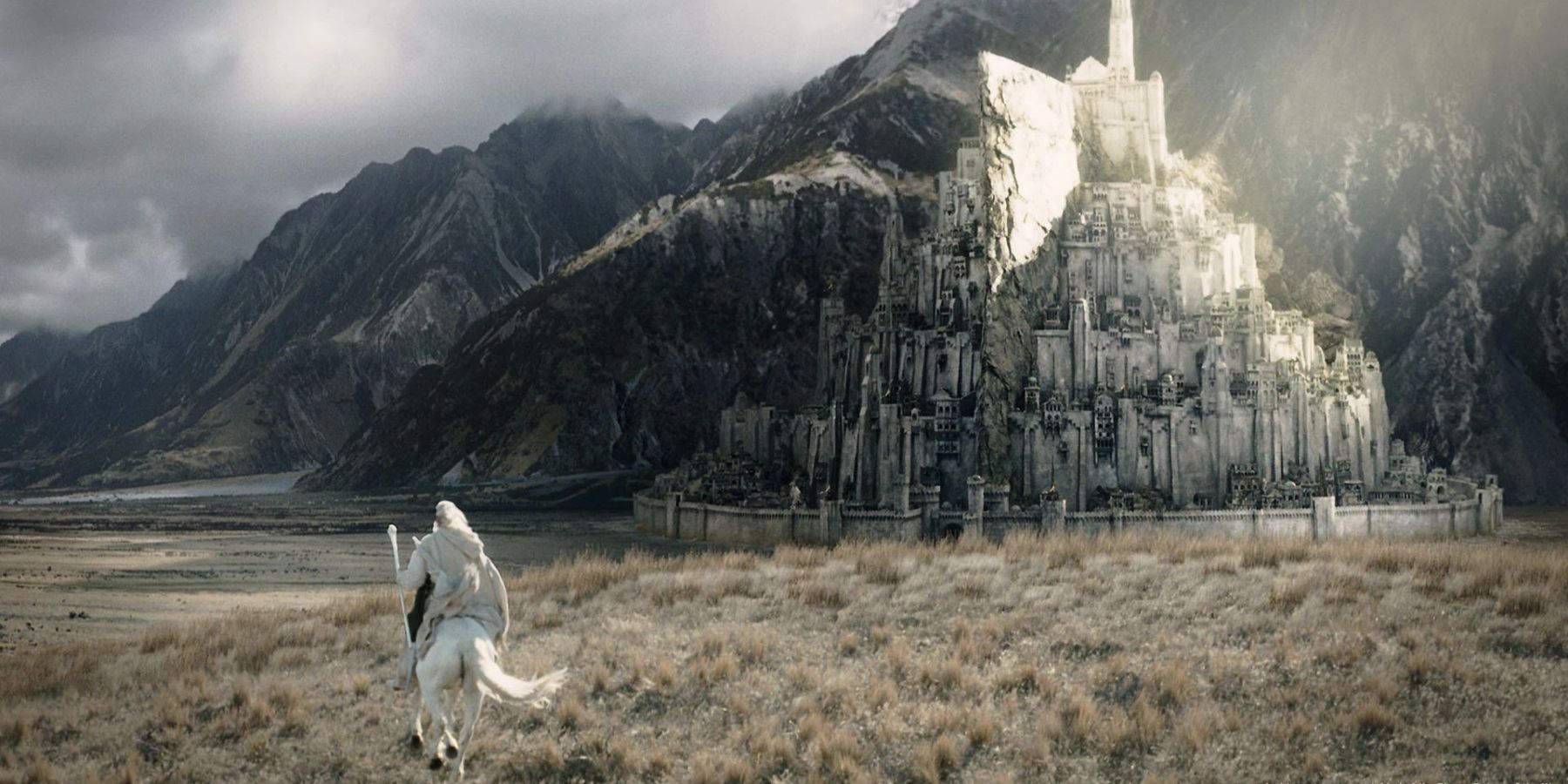
A Hidden Legacy: The Forgotten Kings of Gondor Before Aragorn

Discover the forgotten rulers of Gondor before Aragorn's reign! Unveil the mysteries behind Eärnur's rule and delve into the intriguing history of Gondor's previous leaders
Highlights
Gondor, once a powerful kingdom, was in decline and at war with Mordor when Aragorn returned to claim the throne, bringing hope and a new era of peace for Men.
For centuries, the Stewards of Gondor held political power in the kingdom, assuming control in the absence of an actual king. However, it was Eärnur's vanishing that signified the demise of Gondor's royal lineage and initiated a lengthy period of Stewardship, ultimately shaping the kingdom's history in a profound manner.
The Kingdom of Gondor holds great importance in the Lord of the Rings series. Notable characters like Boromir and Faramir resided there, and the epic battles fought within its borders were pivotal in destroying the One Ring. However, for many centuries, Gondor had been facing unfavorable circumstances. At the start of the Fellowship's quest, the once mighty kingdom was at war with Mordor, encountering numerous challenges and experiencing a period of decline.
The return of Aragorn, a descendant of Gondor and Arnor's ancient kings, greatly impacted the kingdom's political landscape. His legitimate claim to the throne and subsequent coronation as King Elessar at the trilogy's conclusion ushered in a fresh start for Gondor and a new era of peace for its people. To appreciate the significance of Aragorn's return, it is vital to reflect on Gondor's history, its gradual decline, and the reigns of the kings who preceded him.
Who Ruled Gondor Before Aragorn?
Gondor's history traces back to the lost kingdom of Númenor where Isildur and Anárion, Númenórean exiles, founded the kingdom of Gondor in Middle-earth. For over 30 generations, Anárion's descendants ruled as kings, but the kingdom faced numerous invasions, plagues, and internal conflicts, weakening its power. After the disappearance and presumed death of King Eärnur in the Third Age, Gondor was left without a king, ending Anárion's line. As the challenges persisted, the Stewardship was established as the kingdom's temporary governing institution.
Despite no concrete proof of the king's demise, the Stewards of Gondor ruled and safeguarded the kingdom in anticipation of the true king's return. Mardil Voronwë became the first Steward, laying the foundation for the Stewardship. The Stewards assumed political authority, acting as de facto kings, although without the title. Each new Steward pledged an oath to relinquish power to the returning king. For almost a millennium, the Stewards governed Gondor. During the events of "Lord of the Rings," Denethor II served as the 26th and final Steward, holding the position for several decades.
Eärnur’s Reign, Explained
Unfamiliar to some fans, Eärnur's reign brought about significant changes in Gondor's history, despite its brevity. His disappearance marked the end of the line of kings and the beginning of a stewardship that lasted almost a millennium. Prior to becoming king, Eärnur had already established himself as a renowned warrior and leader. His greatest achievement came during the Battle of Fornost in the year 1975 of the Third Age, where he bravely confronted the Witch-King of Angmar, the king of the Nazgûl and one of Sauron's most deadly servants. Although Eärnur managed to defeat and almost kill the Witch-King, his horse fled in terror.
Following the death of his father in 2043 of the Third Age, Eärnur ascended the throne of Gondor. He inherited a kingdom that had faced numerous challenges and triumphs, but its political climate was far from stable. Soon after, he was challenged once again by the Witch-King. Eärnur, known for his impulsive nature and anger, was eager to accept the challenge. However, the steward of Gondor, Mardil Voronwë, restrained him. Eärnur ruled as king for seven years before facing another challenge from the Witch-King. This time, Mardil was unable to intervene. When Eärnur ventured into Minas Morgul to confront the Witch-King once more, he vanished without a trace. The uncertainty surrounding his disappearance profoundly impacted Gondor for generations, as his fate remained unknown. With no heir to the throne, Mardil, who had tried to dissuade the king from facing the perilous challenge, assumed power and became the first steward of Gondor, ushering in a new era for the kingdom.
Who Ruled Before Eärnur?
Prior to Eärnur, Gondor was governed by Eärnil II, his father, a member of the House of Anárion, who held the role of king for a remarkable 98 years. Eärnil, known for his wisdom and military triumphs, also encountered significant defeats during his rule. He remained a loyal ally to Arnor, Gondor's sister kingdom, offering assistance whenever required. The year 2000 of the Third Age witnessed the Witch-King's Nazgûl army ambushing and subsequently capturing the city of Minas Ithil, commencing the second siege. Regrettably, Eärnil passed away in 2013 at the age of 160.
Gondor did not experience reestablishment until 3019 of the Third Age, when Aragorn returned and rightfully took his place on the throne, as depicted in the conclusion of the Lord of the Rings trilogy. Aragorn, a direct descendant of Anárion and a concealed heir of Gondor's founder, Isildur, revived the kingdom of Gondor and united it with Arnor, resulting in the formation of the Reunited Kingdom. Aragorn's reign marks a pivotal moment for Gondor, but it is important to recognize the contributions of those who ruled before him, as they all played a part in shaping the kingdom's enduring legacy.









